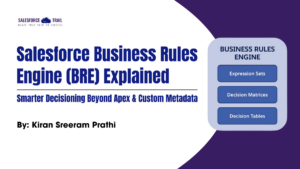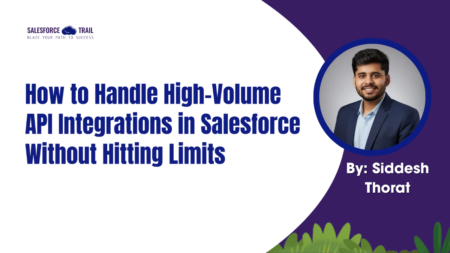In today’s fast-paced business world, having an efficient and high-performing Salesforce system is crucial. Salesforce, as a powerful customer relationship management (CRM) platform, can significantly impact your business’s success. However, to harness its full potential, it’s essential to optimize Salesforce performance. In this comprehensive guide, we’ll walk you through the steps to ensure your Salesforce instance operates at its best.
Understanding the Importance of Salesforce Performance
Salesforce performance optimization is not just about making your CRM run faster; it’s about ensuring that your organization operates smoothly and efficiently. Here’s why it matters:- Enhanced Productivity: Faster load times and responsive interfaces mean your teams can work more efficiently, increasing overall productivity.
- Improved Customer Relationships: A high-performing CRM allows you to provide better service to your customers, leading to improved relationships and higher satisfaction.
- Data Accessibility: Quick data retrieval means your teams can access crucial information when they need it, making better-informed decisions.
10 Strategies to Optimize Salesforce Performance
1. Performance Assessment
Start by assessing your current Salesforce performance. Identify bottlenecks, slow processes, and areas that need improvement. Salesforce provides tools like the Optimizer to help with this.2. Data Model Simplification
Simplify your data model by removing unnecessary fields and objects. A clean data structure reduces query complexity and speeds up data retrieval.3. Strategic Indexing
Create custom indexes on frequently queried fields. Proper indexing can significantly reduce query execution times, enhancing performance.4. Data Volume Management
Implement data archiving and retention policies to reduce data volume. Smaller data sets result in quicker performance.5. Lightning Experience Adoption
Consider migrating to Salesforce Lightning Experience if you’re still using Classic. Lightning offers a modern, responsive interface that enhances user productivity.6. Code Optimization
Review and optimize your Apex code. Minimize queries, optimize loops, and bulkify operations to improve performance.7. Smart Integration
Ensure that external integrations are optimized and don’t negatively impact your Salesforce org’s performance. Efficient integration is crucial for a seamless workflow.8. Routine Maintenance
Implement regular maintenance routines, including cleaning up unused reports, dashboards, and workflows. This keeps your org running smoothly.9. Stay Informed
Keep up with Salesforce updates, best practices, and new features. Salesforce is continually evolving, and staying informed ensures you’re using the latest tools to optimize performance.10. User Training
Properly train your Salesforce users. Knowledgeable users are more likely to use the platform efficiently, reducing the chance of performance issues due to user errors.Conclusion
Optimizing Salesforce performance is an ongoing process that pays off in terms of increased productivity, improved customer relationships, and better decision-making. By following these strategies and best practices, you can ensure that your Salesforce instance operates at its best, helping your business thrive in a competitive landscape. Remember, Salesforce performance optimization is not a one-time task but a continuous effort to keep your CRM running smoothly and efficiently. For more insights and personalized guidance on optimizing Salesforce performance, consult with a Salesforce expert.- Mayank Sahuhttps://salesforcetrail.com/author/mayank-sahu/
- Mayank Sahuhttps://salesforcetrail.com/author/mayank-sahu/
- Mayank Sahuhttps://salesforcetrail.com/author/mayank-sahu/
- Mayank Sahuhttps://salesforcetrail.com/author/mayank-sahu/July 17, 2024

















